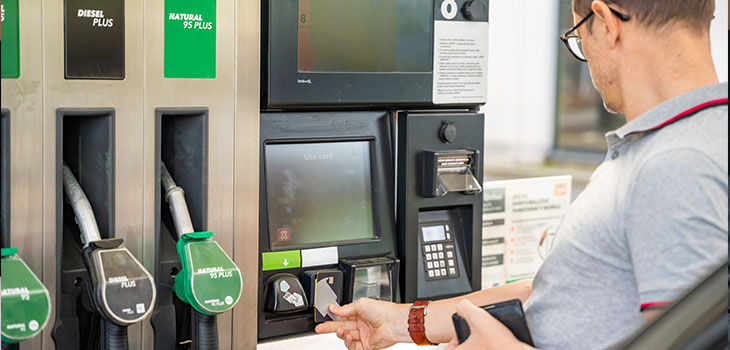A Comprehensive Guide
In today’s increasingly digital world, card skimming has become a growing threat, targeting unsuspecting individuals who use their debit or credit cards at ATMs, gas stations, and even retail locations. Skimmers are small devices criminals attach to card readers to steal sensitive information from your card’s magnetic strip. Once they retrieve this information, they can clone your card or make fraudulent transactions. Thankfully, there are several proactive steps you can take to protect yourself from falling victim to skimmers.
1. Understand How Skimmers Work
Skimmers are often hard to detect because they are designed to blend in with legitimate card readers. Criminals place these devices over or inside card readers to capture card data. Some setups may also include hidden cameras to record PIN entries or the use of a fake keypad overlay to capture keystrokes.
Skimming devices are typically found in high-traffic areas such as:
- ATMs
- Gas station pumps
- Self-service kiosks
- Point-of-sale systems at retail shops
2. Inspect Card Readers
Before inserting your card, take a moment to visually inspect the card reader. Look for:
- Loose or misaligned components: If the card reader looks different from others or appears bulky, it may have been tampered with.
- Unusual parts: Skimming devices often have fake slots or attachments that don’t match the machine's original structure.
- Color and shape mismatches: Any inconsistency between parts of the machine could be a sign that a skimmer has been installed.
In addition, physically jiggle the card reader. Legitimate card readers are securely fastened, while skimmers are often loosely attached and can move when handled.
3. Use Secure ATMs
Whenever possible, use ATMs located inside banks or well-lit, monitored locations. ATMs inside banks are less likely to be tampered with since criminals would find it difficult to install skimming devices in these highly secure locations.
Avoid standalone ATMs in convenience stores, gas stations, or dimly lit areas, as they are prime targets for skimmers.
If it is difficult to insert your card, it could mean that there is a skimming device inside. You should not complete the transaction or input your pin, and should choose a different ATM.
4. Cover Your PIN
One of the simplest yet most effective ways to protect yourself is to cover your hand when entering your PIN. Many skimming setups include small cameras aimed at capturing PIN numbers. By shielding the keypad with your hand or body, you can prevent cameras from recording your keystrokes.
5. Use Contactless Payment Options
Opt for contactless payments whenever available. Modern cards and smartphones equipped with NFC (Near-Field Communication) technology allow for tap-to-pay transactions, eliminating the need to insert your card into a reader. This reduces the chances of your information being skimmed, as contactless payments do not rely on the card’s magnetic strip.
Mobile payment apps such as Apple Pay, Google Pay, and Samsung Pay also offer secure alternatives since they generate unique transaction codes and do not transmit your actual card number.
6. Monitor Your Bank Statements Regularly
Even with precautions, it’s essential to remain vigilant. Frequently review your bank and credit card statements for any unauthorized transactions. Most financial institutions have alerts and notifications for unusual or suspicious activity—set these up to catch potential fraud early.
If you notice any discrepancies, report them immediately. Many banks offer fraud protection, but timely reporting is key to avoiding personal liability for losses.
7. Use Credit Over Debit
Whenever possible, use a credit card instead of a debit card for transactions in vulnerable areas. Credit cards typically offer better fraud protection than debit cards, which directly access your bank account. In the case of a fraudulent transaction, resolving a credit card dispute is often easier and faster than recovering funds from a debit card.
8. Consider a Skimming Protection App
There are mobile apps that can help detect skimming devices by scanning for Bluetooth signals or irregularities in card readers. These apps are particularly useful at gas stations or ATMs where skimmers may use Bluetooth to transmit stolen data to nearby criminals.
9. Use Gas Pumps with Tamper-Resistant Seals
Gas stations have become a popular target for skimmers. To protect yourself:
Choose pumps that are closer to the store or attended by staff.
Use newer gas pumps that have tamper-resistant seals and encryption technology. Many stations have started installing these security features, making it harder for criminals to install skimmers.
10. Stay Informed About New Skimming Threats
Skimming tactics evolve, so it’s important to stay up-to-date on new methods used by criminals. Regularly check for alerts from your bank, local authorities, or consumer protection agencies for the latest skimming threats in your area.
Protecting yourself from skimmers is essential in today’s digital age. By staying alert, inspecting card readers, using contactless payments, and regularly monitoring your financial statements, you can significantly reduce your chances of falling victim to this type of fraud. Always remember, a few moments of caution can save you from major headaches later.


